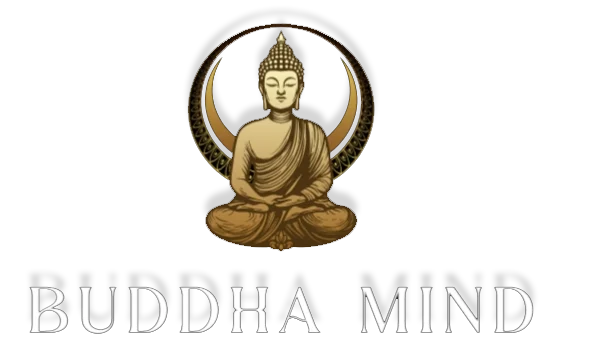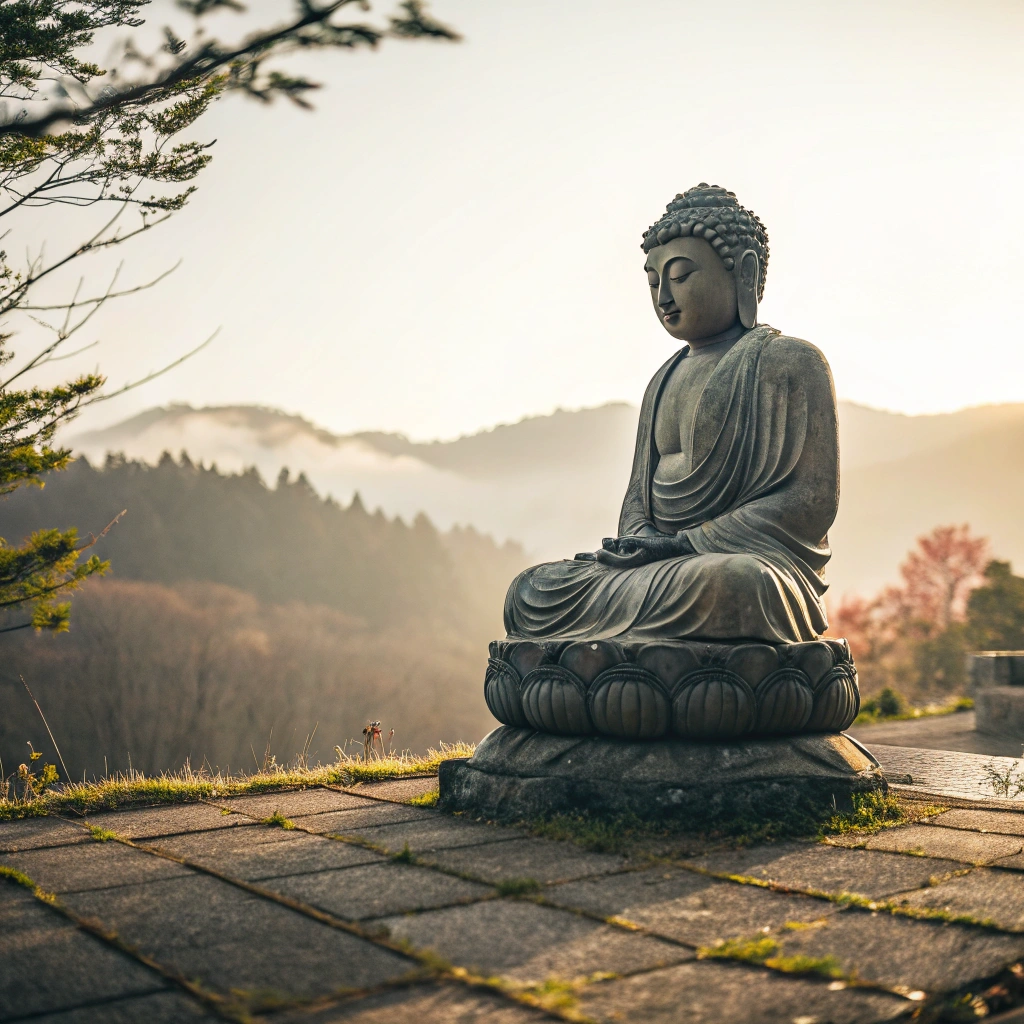
Siddhartha Gautama: The Journey from Prince to Buddha
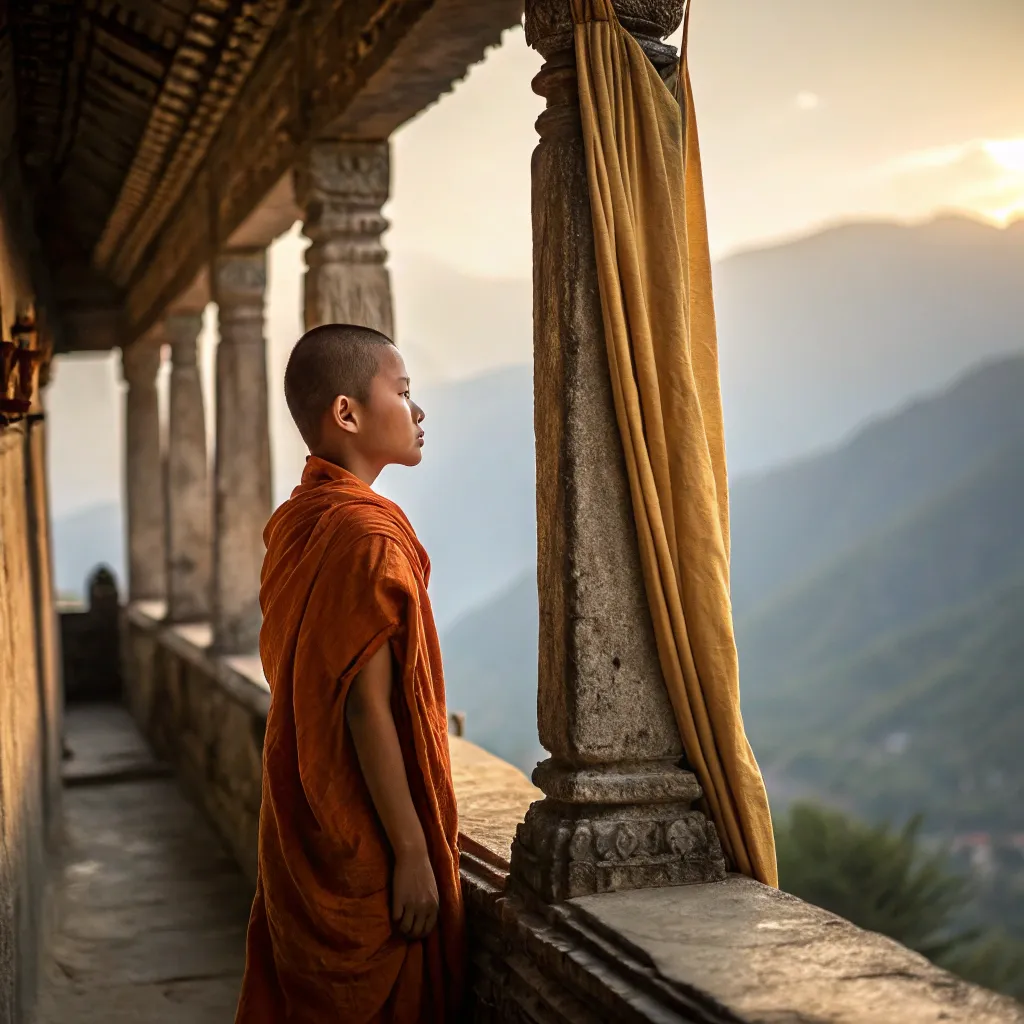
Early Life: Luxurious Beginnings in the Shakya Kingdom
Nestled in the serene foothills of the Himalayas, Siddhartha Gautama was born around the 6th century B.C. into a life of unparalleled privilege within the royal Shakya clan. Shielded from life’s harsh realities by the comforts of his palace, his early years seemed destined for earthly greatness rather than spiritual awakening.
Yet, despite living amid splendor and opulence, Siddhartha felt a subtle but persistent dissatisfaction—a longing for answers beyond material pleasures. Have you ever felt a similar curiosity or restlessness, sensing that true happiness lies beyond material comforts?
Awakening Through Reality: The Four Encounters
Siddhartha’s sheltered worldview shifted dramatically when he ventured beyond the palace walls, encountering life’s inevitable realities. Four encounters altered his path permanently:
- An elderly man, revealing the inevitability of aging.
- A sick person, illustrating the fragility of health.
- A corpse, symbolizing life’s impermanence.
- An ascetic monk, showcasing a serene detachment from worldly suffering.
These vivid experiences sparked a profound internal shift, making Siddhartha realize suffering is an inherent part of human existence. Could these universal truths resonate with your own experiences?
Leaving Royalty Behind: The Path of Asceticism
At age 29, Siddhartha Gautama decisively abandoned his luxurious life, family, and the throne itself, embracing a path of spiritual inquiry through asceticism. This radical choice distressed his loved ones deeply, yet Siddhartha knew it was essential for uncovering life’s deeper truths.
Initially, Siddhartha adopted severe austerities, engaging intensely in practices such as rigorous meditation, fasting, and yoga. He believed that self-denial could lead him to spiritual clarity. However, extreme physical deprivation ultimately led not to enlightenment but exhaustion, highlighting a crucial spiritual lesson: enlightenment cannot be forced.
Finding Balance: The Middle Path to Enlightenment
Realizing extremes were ineffective, Siddhartha embraced moderation—known as the Middle Path. Rejecting both luxury and severe self-denial, he restored his health with balanced nourishment, signaling a powerful shift in spiritual philosophy.
This moderate approach emphasizes balance as key to personal and spiritual fulfillment. Have you ever struggled with extremes in your own life, only to discover wisdom in moderation?
Under the Bodhi Tree: The Enlightenment Experience
A single transformative night under a sacred fig tree—now famously known as the Bodhi Tree—marked the pinnacle of Siddhartha’s spiritual quest. Deep meditation beneath its branches opened his awareness fully, unveiling profound truths about existence.
During this enlightenment, he vividly perceived the cyclic nature of life, the cause and end of suffering, and the balanced path toward spiritual liberation. This pivotal realization transformed Siddhartha Gautama into the Buddha—the Enlightened One.
Essential Facts About Siddhartha Gautama’s Journey
The following table summarizes key moments and interesting facts from Gautama’s path to becoming the Buddha:
| Fact or Event | Detail or Insight |
|---|---|
| Birthplace | Lumbini, near the Himalayan foothills |
| Lifespan | Approximately 563–480 B.C. |
| Age at Renunciation | 29 years old |
| Key Encounters | Old age, sickness, death, asceticism |
| Path to Enlightenment | The Middle Path—balance between extremes |
| Place of Enlightenment | Under the Bodhi Tree, Bodh Gaya, India |
| Core Teaching | Four Noble Truths and the Eightfold Path |
This concise summary serves as a quick reference, highlighting the essential milestones of Siddhartha’s transformative journey.
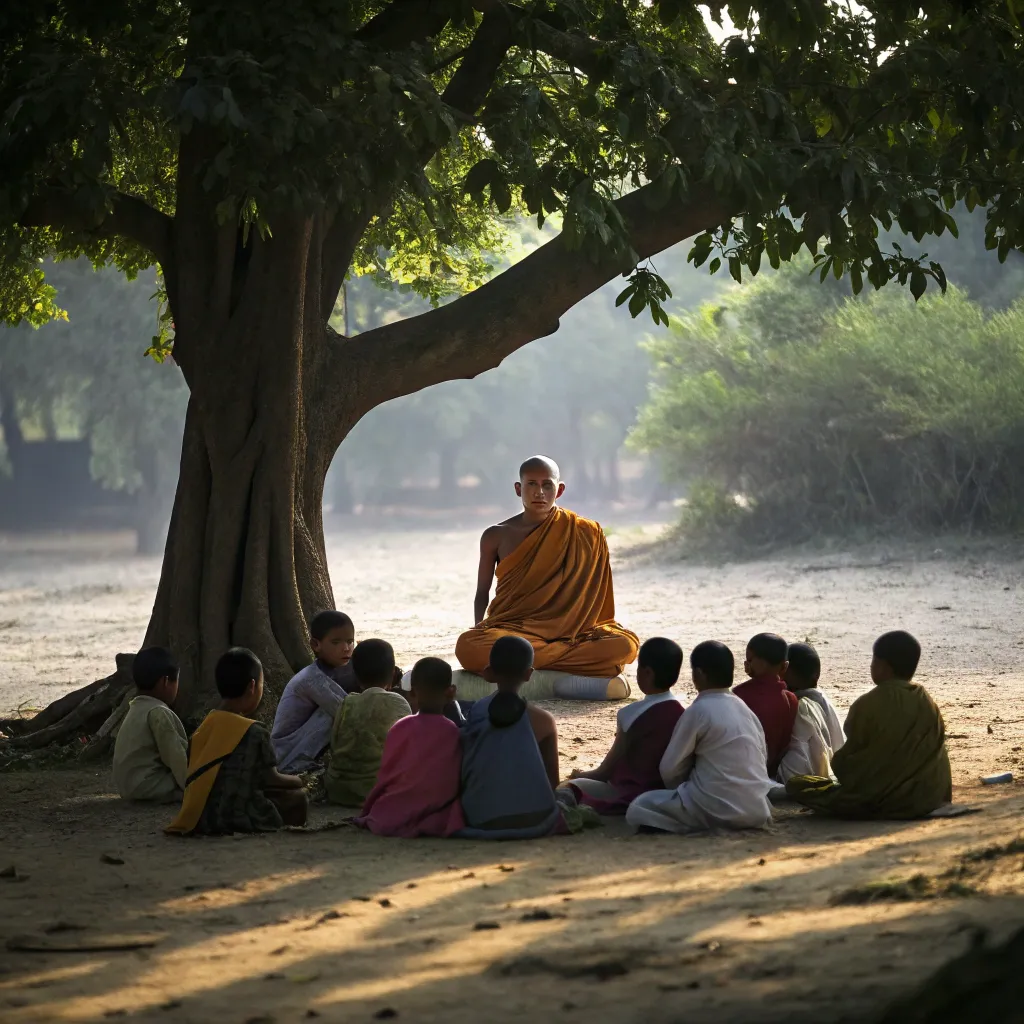
Sharing the Dharma: Buddha’s Teachings Begin
Initially hesitant, believing his insights too complex for everyday understanding, Buddha overcame this reluctance and began teaching in Deer Park near Benares. His simple yet profound messages resonated deeply with many, rapidly drawing diverse followers from various walks of life.
This turning point illustrates how powerful truths, clearly communicated, can transform individuals and entire communities. Have you ever encountered teachings that fundamentally changed your worldview?
The Sangha: Cultivating a Community of Wisdom
Buddha recognized early on that true wisdom flourishes best within a supportive community. Thus, he established the Sangha, a collective of monks, nuns, and lay followers dedicated to practicing and preserving his teachings—the Dharma.
Initially, this innovative community faced societal skepticism, as its egalitarian principles challenged traditional social hierarchies. Yet, thanks to the devoted efforts of lay supporters and influential benefactors, the Sangha soon thrived. It quickly became an essential platform for disseminating Buddha’s spiritual insights, demonstrating how community and mutual support are vital to spiritual growth.
Imagine a supportive community where your deepest questions and spiritual struggles are met with understanding rather than judgment. Could this enrich your own journey?

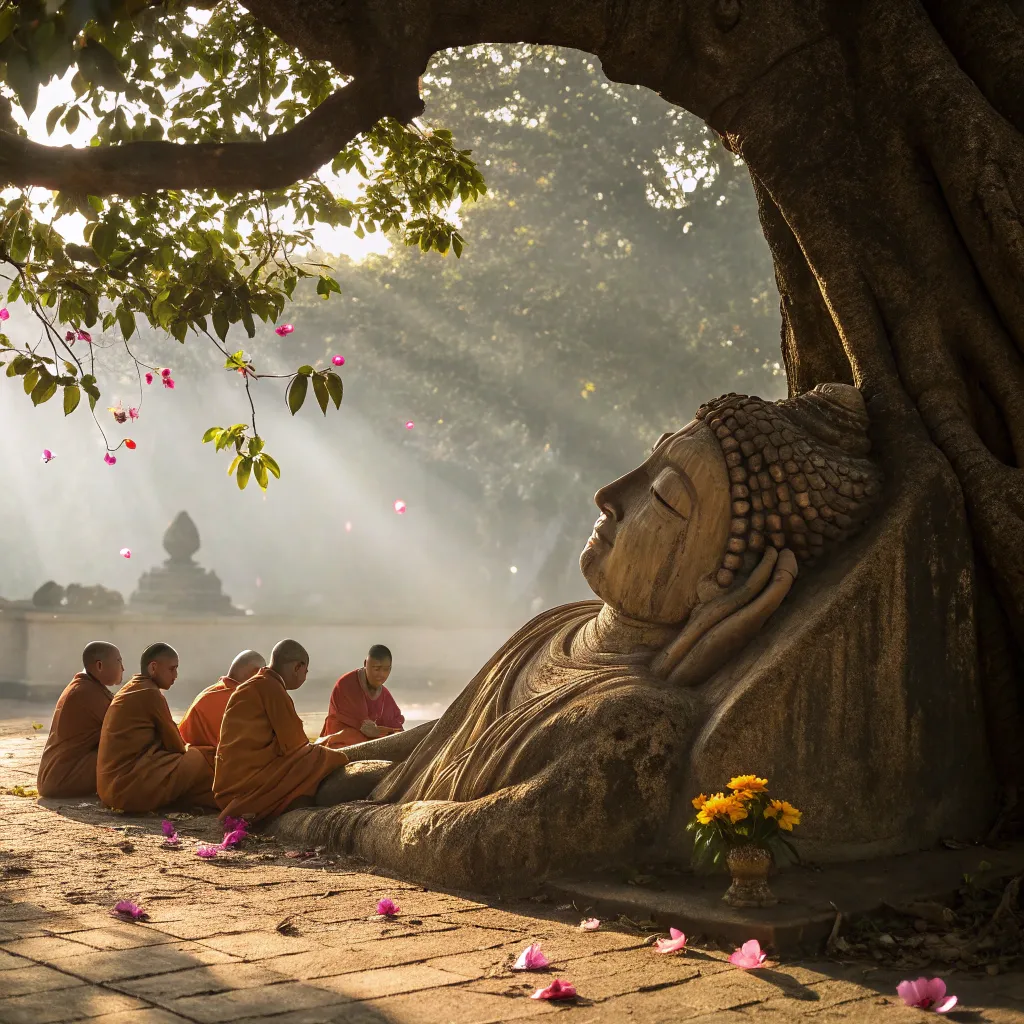
Buddha’s Final Teachings: Empowerment Through Self-Reliance
As Buddha approached the end of his life around 480 B.C., he left his followers one last empowering lesson: spiritual growth depends on personal effort and mindful practice. Encouraging followers to rely on themselves rather than external figures, he emphasized continuous learning, contemplation, and disciplined practice.
Buddha’s final transition into Nirvana symbolized his freedom from the cycle of birth and death, yet his teachings persisted, transcending geographic, cultural, and temporal boundaries.
TCore Teachings of Buddha: The Four Noble Truths and Eightfold Path
Central to Buddha’s philosophy are two foundational concepts—the Four Noble Truths and the Eightfold Path. Both offer practical guidance on achieving a life free from unnecessary suffering and full of purpose and harmony.
The Four Noble Truths: Understanding Suffering
- The Truth of Suffering: Life inherently includes dissatisfaction and suffering.
- The Origin of Suffering: Desire and attachment create suffering.
- The Cessation of Suffering: Ending attachment and desire can stop suffering.
- The Path to Ending Suffering: Practicing the Eightfold Path leads to liberation.
The Noble Eightfold Path: Steps Toward Enlightenment
Buddha’s Eightfold Path outlines practical steps to a fulfilling, balanced life:
- Right Understanding: Clearly seeing life’s realities.
- Right Thought: Cultivating compassion and kindness.
- Right Speech: Communicating truthfully and constructively.
- Right Action: Behaving ethically and non-harmfully.
- Right Livelihood: Choosing professions that align with moral values.
- Right Effort: Applying consistent, mindful energy toward improvement.
- Right Mindfulness: Remaining aware and attentive to the present moment.
- Right Concentration: Developing focused meditation practices.
Adopting even parts of this path in daily life can significantly increase peace and clarity. Which of these steps could you incorporate into your daily routine to foster greater balance?

How Buddhism Continues to Inspire Today
Buddha’s influence remains profoundly alive. Approximately 500 million people worldwide identify as Buddhists, with practices varying across cultures but unified by common teachings. Buddhism’s philosophy has also gained popularity beyond its traditional contexts, inspiring mindfulness practices, meditation programs, and therapeutic methods worldwide.
Key Facts: Buddhism in the Modern World
This table outlines Buddhism’s continued global impact today:
| Aspect | Insight or Statistic |
|---|---|
| Global Followers | Approximately 500 million Buddhists worldwide |
| Major Countries | China, Thailand, Japan, Myanmar, Sri Lanka |
| Fastest-Growing Region | Western countries due to mindfulness popularity |
| Popular Modern Applications | Mindfulness-Based Stress Reduction (MBSR), meditation apps |
| UNESCO Heritage Sites | Over 20 significant Buddhist sites globally recognized |
These data highlight Buddhism’s vibrant, lasting impact, illustrating its ability to adapt and resonate universally.
Practical Lessons from Buddha’s Life for Personal Growth
Reflecting on Siddhartha Gautama’s transformative journey provides actionable insights for modern-day seekers:
- Balance: Avoid extremes; find moderation in life’s activities.
- Mindfulness: Regular meditation fosters clarity, compassion, and emotional resilience.
- Community: Engage with supportive, like-minded communities for growth.
- Personal Responsibility: Spiritual development requires active, personal effort rather than passive reliance.
These teachings resonate deeply today, offering guidance toward genuine fulfillment and inner peace. Have you considered incorporating these lessons into your own life to navigate daily challenges with greater ease?
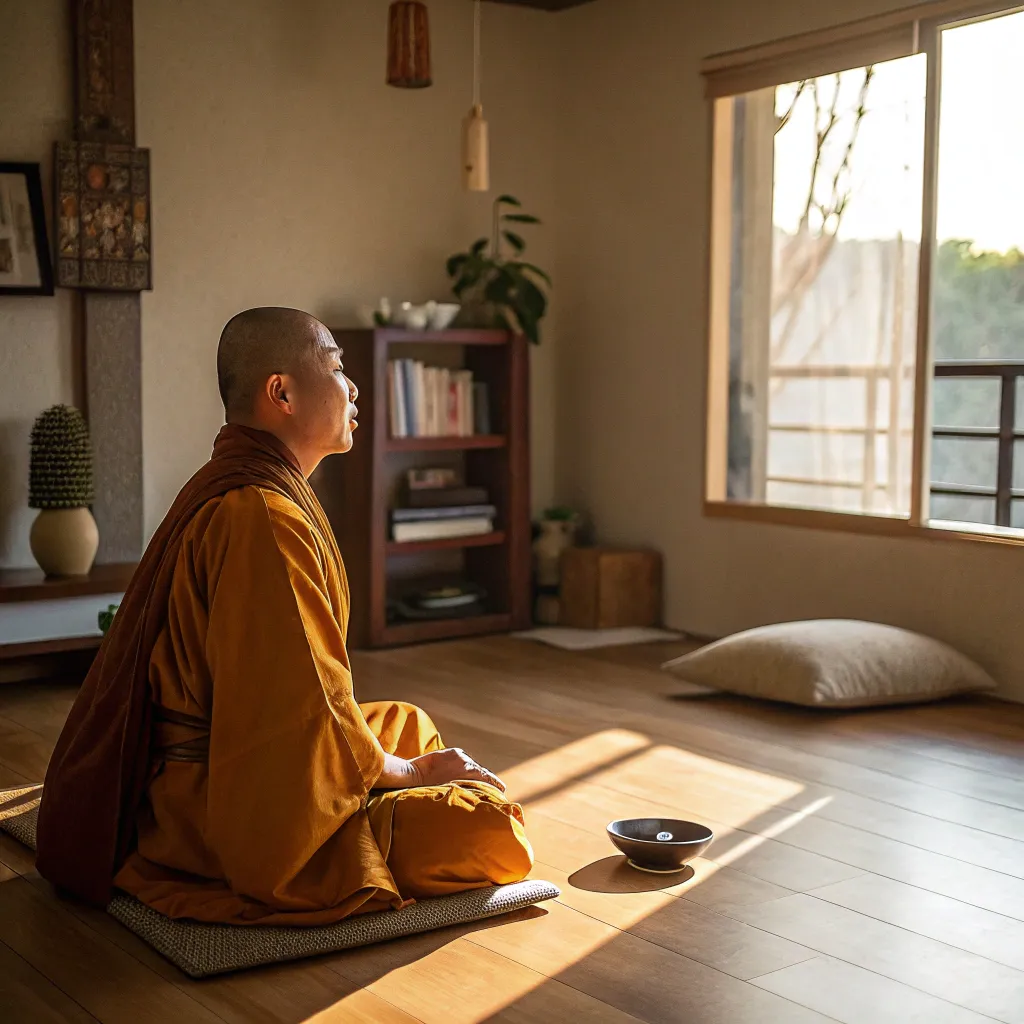
Conclusion: Siddhartha Gautama’s Lasting Legacy
From a sheltered prince to the profound teacher known as the Buddha, Siddhartha Gautama’s journey underscores humanity’s timeless quest for deeper meaning and peace. His legacy, sustained by vibrant teachings and communities, continues to illuminate paths toward personal and collective awakening worldwide.
In every age, Siddhartha Gautama reminds us that regardless of our starting point, the journey to enlightenment remains open to all who seek it earnestly.
